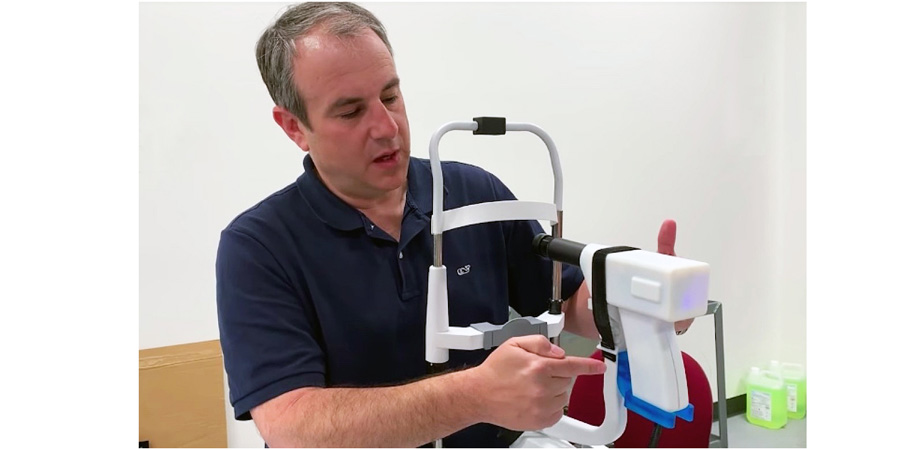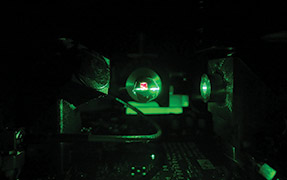Light-scattering Technologies Ready to Make Clinical Impact

Scattering of light can be problematic in many imaging scenarios, but also offers the ability to characterize biological tissues in ways that either cannot be achieved by direct optical imaging, or not carried out to the same resolution. This makes it a potentially disruptive technology for cancer diagnosis and other biomedical challenges.
Adam Wax of Duke University, who co-chaired the tenth BiOS conference on Biomedical Applications of Light Scattering alongside Vadim Backman from Northwestern University, believes that the field is now thriving, thanks to a combination of smart technological innovation and an increasingly smooth path for translation into clinics.
"It really shows the staying power and strength of interest in biomedical applications of light scattering that we have got to a tenth meeting on the topic," commented Wax. "We had a hiatus for a couple of years, but have brought it back for 2020 to discuss some of the most significant current work in the field."
Like many of the early researchers into biomedical light scattering, Wax initially became interested in the technique's potential to detect and characterize cancerous tumors, after initial clinical trials in the late 2000s showed that the early stages of the disease could be identified in this way.
Subsequent studies have honed the technology into a versatile means of gathering information about other forms of tissue as well, often exploiting the improved signal-to-noise ratio that can result when the angular distribution and scatter of light returning from a target is detected, rather than the smaller number of directly returned photons.
Some of these breakthroughs were featured in previous BiOS Hot Topics sessions as promising concepts, before now returning for discussion in the dedicated BiOS conference stream as diagnostic techniques, poised to make a clinical impact.
Among a high-caliber conference program, Wax highlighted a presentation by Paul Campagnola from the University of Wisconsin-Madison, describing optical methods to distinguish between healthy and diseased tissue through the combination of scatter and second harmonic generation emission. This could be valuable in the diagnosis of ovarian cancer, pulmonary fibrosis and osteoarthritis.
Another significant paper concerning cancer detection comes from Quing Zhu and Yifeng Zeng of Washington University in St Louis, who used OCT to reveal scattering signatures of human colorectal and ovarian tissues, for quantitative classification of both normal and malignant processes underway in the cells.
A third area of innovation involves the use of light-scattering techniques to study neural structures and brain behavior — a highly significant use for the technology, according to Wax.
"We have Daniel Palanker from Stanford University discussing interferometric imaging of neural activity, and how cellular deformations associated with changes of cell potential can reveal underlying physiological activity," he said.
"And Erin Buckley from Emory University has combined diffuse correlation spectroscopy with more traditional near-IR approaches, to visualize cognitive dysfunction after brain injury. This is very timely, in view of the current debate about how to effectively classify head injuries suffered during competitive sports, and preferably do so right there on the field of play."
Making technology widely available at lower cost
These research breakthroughs will need as smooth a translation as possible from laboratory to clinic, if their potential is to be fully realized, and Adam Wax believes that the path is becoming increasingly well understood, both by researchers and those in control of the funding mechanisms involved.
"After the initial clinical studies in the early 2010s, people were naturally excited to bring these to clinic," he said. "But some of the FDA regulatory approvals at the time proved to be difficult, and VCs had to be approached for substantial sums of money. Today we see a much more receptive FDA, which is turn makes the market more receptive to the idea of funding new technologies. You no longer need to raise millions of dollars to bring something new to market."
The US Small Business Innovation Research (SBIR) program, along with other governmental grant operations, has been particularly significant in reducing the sums of seed capital needed to develop devices for trials. Wax has personal experience of this improved climate through his position as co-founder and chief scientist at Lumedica, a 2014 spin-out from Duke University's Biomedical Interferometry Optics & Spectroscopy Lab.
Lumedica has developed a small ocular OCT scanner with a relatively low price point and a robust user-friendly design, compared to conventional large clinical OCT devices. The intention is to allow OCT to reach more patients in areas where access to clinical care may be limited, including several low-resource settings. The company exploited advances in 3D printing to design a device where the effects of expansion and contraction are carefully controlled, while keeping both cost and weight as low as possible.
"Our approach was to deliver low-cost biomedical imaging equipment to market and to make it more accessible, by adopting technology likely to be readily FDA approved and designing a device that was lightweight, robust and portable," noted Wax, who sees a parallel between the changed climate for innovation that has benefited Lumedica and that now available to developers of light-scattering technologies.
"For this field I would like to see the same kind of process, where we take these great technical advances by cutting-edge researchers, and enable them to become more broadly accessible. That might mean using 3D printing to help manufacture the relevant instrumentation, or perhaps new forms of fiber-optic probes used by the device. But the opportunity is there is to make these light-scattering technologies widely available at lower cost. Being able to deliver new technologies to market without multi-million-dollar VC investments and in devices costing perhaps hundreds, rather than thousands, of dollars would enable the technology to take leaps and bounds towards clinical translation."
In the meantime, SPIE Photonics West events such as the Startup Challenge, in which Wax competed in the past, along with the multi-disciplinary nature of the BIOS conference, will continue to spark the kind of connections through which the technology can progress.
"Advances are made when good researchers spot new technologies and see how their own projects might benefit," commented Wax. "Putting those ideas in front of people is the start of the whole ecosystem. And as a biomedical engineer, it's great when we can transcend the optics journals and reach the medical community. When we have the doctors talking about these light-scattering optical techniques, that is really exciting for me."
Tim Hayes is a freelance writer based in the UK. He was previously industry editor of optics.org and Optics & Laser Europe magazine. This article originally appeared in the 2020 SPIE Photonics West Show Daily.
Related SPIE content:
Adam Wax video: Early cancer detection with scattered light
Duke's Adam Wax on the SPIE Startup Challenge
| Enjoy this article? Get similar news in your inbox |
|



